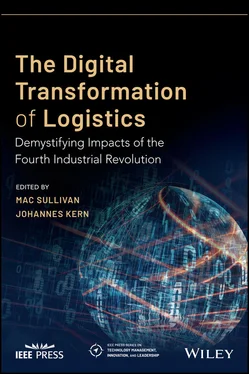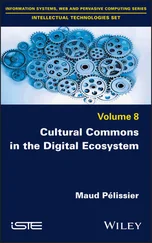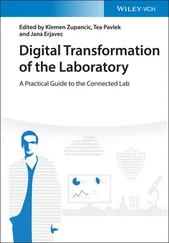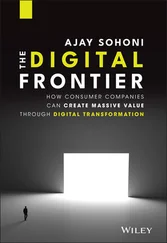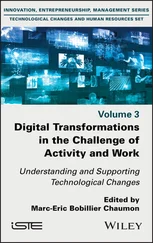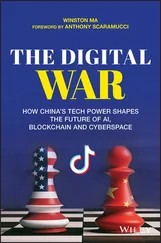Technologies like self‐driving cars and virtual reality have often fascinated science fiction lovers; however here the authors will examine them in the context of how they will shape the future of the supply chain industry. These innovations are often presented as being solutions to some of the biggest issues plaguing businesses and consumers. However, there is a certain amount of hype that must be set aside. On the other hand, McAfee and Brynjolfsson (2014) famously wrote that “Many people are falling behind as technology races ahead,” giving way to the idea that maybe there is not enough excitement to push business to think of emerging tech as viable solutions. In the following chapters, in order to keep us from falling behind or getting too far ahead of ourselves, the authors will peel back the layers of mystery and excitement that have grown around these new ideas and solutions and show some amazing use cases that are having a real impact on the future of work. Each chapter in this section focuses on a particular technology that has come about or been significantly improved by innovations that followed the Third Industrial Revolution. The authors present these technologies that are fueling 4IR through a pragmatic lens by explaining each technology, how it works, its application in logistics and supply chain, and the additional challenges that it may bring.
To start the section, Axel Neher discusses one of the defining topics of 4IR that is the Internet of Things (IoT). IoT enables traditionally offline, disconnected devices to gather and transmit data on a network. Neher discusses applications of IoT in logistics management and describes how it can be used to increase supply chain visibility and monitor goods within a container or on a truck as they are moving.
3D printing, otherwise known as additive manufacturing, is broken down in the Chapter 4by Johannes Kern, who offers a background to the technology and use cases that are being seen in production. He discusses different methods of 3D printing and describes to us how giving end users a new role in the supply chain is having a disruptive effect.
White‐collar workers throughout the supply chain ecosystem are not immune to the effects of automation; however, this shift in work has been less visible in mainstream media. In The Role of Robotics Process Automation (RPA) in Logistics , Mac Sullivan, Walter Simpson, and Wesley Li show that robotic process automation (RPA) is offering a real alternative to offshoring of clerical work. Underpinning the success of process automation and optimization is the need for logistics companies to map out how they currently operate and systematically break down complexity.
One of the hottest topics in the past five years across the financial world has been blockchain, which is known mostly as the foundation of cryptocurrency, but it has numerous other applications outside of this. Here, Nic Krapels breaks down the history and basics of blockchain for our readers to have a general context for why this technology has created such a stir. Krapels explores how innovative startups are taking the concepts and core functionality of blockchain and applying them to supply chain and logistics problems. The other end of the spectrum is a venture between Maersk and IBM who have created a blockchain product named TradeLens that is attempting to revolutionize segments of ocean freight transportation.
The courier, express, and parcel (CEP) delivery services have received a lot of attention in recent years with the rise of global e‐commerce giants like Amazon or Alibaba. The fastest growing segment of this industry is in China where a highly developed and specialized market allows people to buy almost anything at the convenience of a fingertip. However, local logistics networks are still struggling to keep up with demand and are constrained by various operational challenges such as high costs, low efficiency, and a lack of integrated intermodal transport networks. Here, digitalization becomes key to increasing efficiency and transparency. In Chapter 7, Scott Wang and Johannes Kern explain the challenges in the logistics operations of key industries, describe contemporary digitalization solutions, discuss e‐commerce in China and its CEP market, and highlight new challenges in the competitive environment that increase the burden on all market players. In addition, they share a case study about the successful application of artificial intelligence in a CEP company in China.
Thanks to the inventor and entrepreneur Elon Musk and his company Tesla, autonomous vehicles have been pushed to the forefront of discussion about emerging technology. Many other automotive manufacturers are also hard at work creating their own versions of driverless vehicles. The topic has received a lot of attention in the logistics industry due to the potential cost savings of using autonomous truck fleets as well as the concerns that it will lead to the mass unemployment of truck drivers. The technology also has applications within factories and warehouses where autonomously guided vehicles could handle the picking and storage of goods. In Understanding the Impacts of Autonomous Vehicles in Logistics , Lionel Willems writes about the feasibility and timeline of rolling out automated trucks and warehouses as well as the intricacies of adopting these solutions.
To conclude this section, industry expert John Berry gives an overview of a variety of topics related to the evolution of IT departments in the logistics companies. In this chapter, he exposes the opportunities and challenges driven by a transition to the cloud. Having less physical technology along with less hands‐on information technology staff in‐house has been driving the need for logistics providers to be brought into the cloud‐powered workplace.
1 McAfee, A. and Brynjolfsson, E. (2014). The Second Machine Age: Work, Progress, and Prosperity in a Time of Brilliant Technologies. Zurich: W. W. Norton.
2 Schwab, K. and Davis, N. (2018). Shaping the Future of the Fourth Industrial Revolution: A Guide to Building a Better World. New York: Currency.
3 Logistics Management in an IoT World
Axel Neher
Bosch Rexroth, Shanghai, China
The way of doing business has entered the new era of the Internet of Things (IoT). Many new technological innovations have boosted the ability to collect, store, and analyze data in unprecedented availability, speed, and volume. IoT is spreading to almost all sectors including manufacturing, logistics, agriculture, healthcare, and building management. At home, smart speakers are making it easier to get weather information or play music, smart thermostats allow us heat our home before we arrive back, and smart home security systems let us easily monitor what is happening inside and outside or talk to visitors. In companies, data can be collected and analyzed to better understand product performance, and manufacturers can optimize machine performance or replace components before they cause damage (Ranger 2020). Fundamental to this is the IoT that enables various physical devices, embedded with electronics, software, sensors, actuators, and network connectivity, to collect and exchange data (Oztemel and Gursev 2020). The physical devices represent “Things” like machines, material, or even people. IoT is therefore also referred to as cyber‐physical systems (CPSs), merging the physical and digital world. 1
In this chapter, the topic of how this “new” world of connected Things impacts logistics and supply chain management (SCM) will be discussed. In analogy to Industry 4.0, some call this Logistics 4.0 (Bousonville 2017; Strandhagen et al. 2017).
As IoT is still under development, a broad range of technologies is discussed to describe what IoT is about (Strandhagen et al. 2017; Kern and Wolff 2019; Oztemel and Gursev 2020). This is a small selection:
Читать дальше
